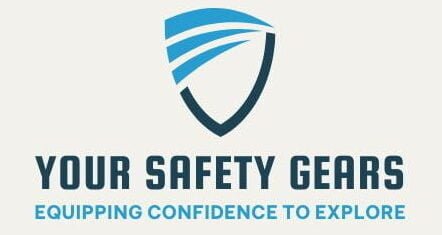An equipped first aid kit is a lifesaver; especially before professional medical care arrives. First aid kits stacked with the right tools can help you handle minor injuries or serious incidents effectively. Common items in first aid kits like tweezers, gloves, gauze pads, medical tape, and so on are essential. Odd inclusions to the kit like safety pins may seem insignificant but can be quite useful. But why do you need safety pins in a first aid kit?
Safety pins in a first aid kit has several vital uses that could help you achieve decent medical care before experts are available. Let’s explore the various uses of safety pins. You can take advantage of these details to use these accessories in more ways than you’ve ever imagined possible.
Uses of Safety Pins in First Aid (and more)
1. To secure dressings
Dressings could be messy without proper fastening. You may need to hold wound dressings together with safety pins while administering first aid. Safety pins can help you keep dressings over wounds if you’ve run out of medical tape during an emergency. These pins can come in handy around areas where medical tape may not work well.
2. To hold bandages in place
You may use medical tape to fasten some bandages onto each other; however, this may not be ideal every time. Some wounds could require bandages placed in awkward directions to encourage faster healing. Safety pins can be of great use in such instances to keep wounds protected from infection.
Use safety pins to secure bandages around wounds with ease while keeping healing aids around the affected area.
3. For creating emergency slings
You need to administer first aid to fractures or strains as soon as possible. Use a safety pin as a makeshift fastener on slings, especially when you’re far away from professional medical care. Safety pins can help keep slings in place. These pins are handy when you need support for fractures with a piece of clothing or several bandages.
You will need large-size safety pins to create strong splints, so it’s always safe to have this accessory in all sizes in your first aid box. Always seek additional care immediately after exiting areas where professional medical experts are unavailable. However, safety pins in emergency slings are vital to prevent injuries from escalating before you can get professional help.
4. To remove splinters
Foreign objects lodged into skin by accident can be uncomfortable and could require immediate attention. Splinters can be unbearable and may require urgent action before seeking professional medical care.
You can sterilise a safety pin and carefully remove splinters from skin in emergency cases. These pins can come in quite handy to lift out small foreign objects from skin. Exercise extreme caution while using such pins to remove tiny objects lodged into skin. It is also advised to seek medical care after removing the splinter or other foreign object from skin.
This use should be always considered a last resort and not your first course of action to remove splinters. Always opt for professional medical attention if available to handle any issues you may have. Only use safety pins this way in extreme cases (in faraway outdoor environments, natural disasters, etc.).
5. To organize supplies
Organizing items in your first aid box can be quite a challenge without safety pins. You can use these pins to keep several items together in the first aid box with ease. First aid box safety pins can come in handy to:
- keep antiseptic wipes together,
- store gauze pads in one piece,
- keep bandages together,
- organize small items within the kit,
- declutter several sections of your safety kit, and so on.
Several supplies in your first aid box will be comfortable to manage using these pins. Better organization also allows you reach essential items with ease during emergencies.
6. As a makeshift needle
Maintaining warmth during outdoor weather can be quite a challenge under a tent with torn fabric or loose seams. You can take advantage of a safety pin for first aid boxes to create a needle in an emergency. These pins can help you mend seams and torn areas of your outdoor tent during extreme situations. Follow these steps to use the pins in your first aid kit as an emergency needle:
- Expose the sharp end of your safety pin (large-size variants will work better),
- Get some thread from the loose seam or use other strings you can find,
- Create holes on the fabric with the sharp end to pass strings through,
- Pass strings through both sides of the loose seam or torn fabric and tighten each join as you go,
- Make a loop at the string’s end and tighten the entire seam in place
Safety pins can be useful whenever you need a tiny, pointed edge to complete several tasks during emergencies.
7. As a makeshift fishing hook
Surviving the outdoors can be a challenge without adequate gear. Your survival outdoors usually depends on just enough food and adequate shelter before exiting such an environment. You can use safety pins as makeshift fishing hooks in areas with water bodies that may have fish.
You’ll need a piece of string, some wood, and few other items to create a makeshift fishing hook. These pins can also come in handy when you run out of hooks while fishing.
Final Word
Safety pins seem useless in a first aid box, but the accessory supports numerous vital functions in emergencies. You can take advantage of the item to secure bandages, remove splinters, create splints, and more. The pins are light and won’t take up any space in your first aid kit.
Safety pins should be in your first aid kit for various uses during emergencies. Having a good number of safety pins can help you respond better in different situations. Always ensure your first aid kit has every essential item along with one of its most useful components – safety pins.



